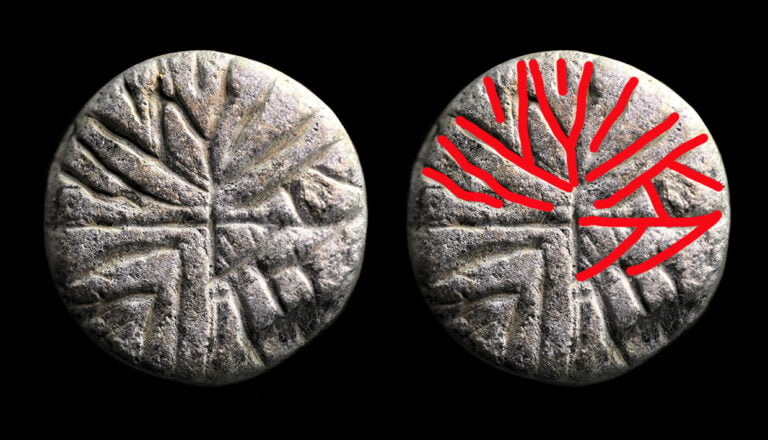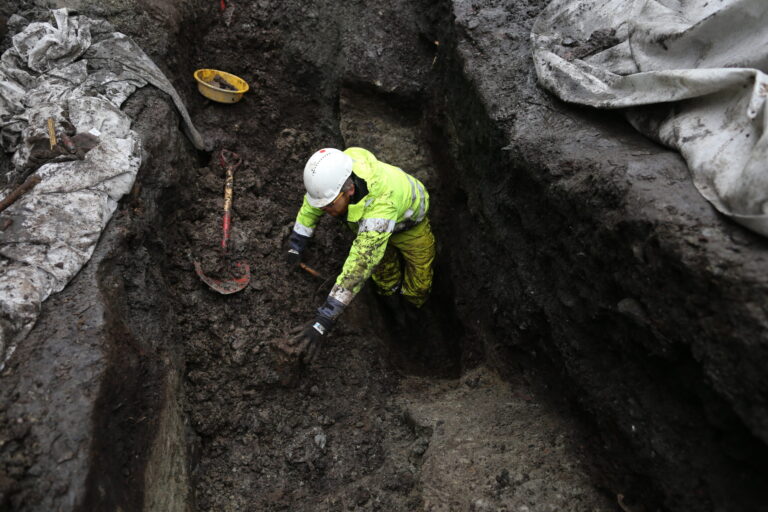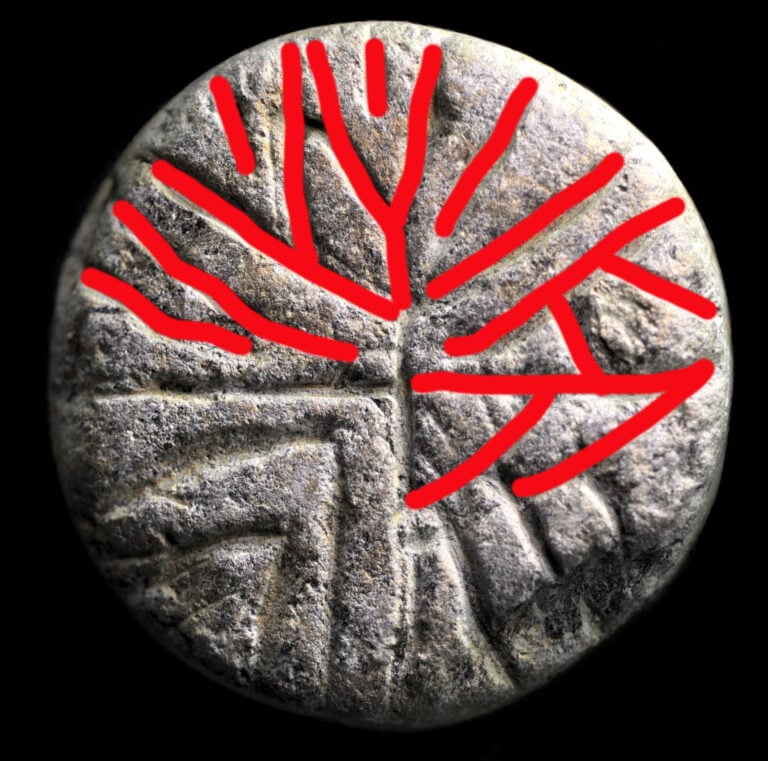This fascinating gaming piece with a runic inscription is the latest in a series of fascinating finds from the late Viking Age.
In the process of repairing an old sewer pipe under Trondheim's Erling Skakkes gate last year, archaeologists from NIKU carried out an examination of medieval layers that would be disrupted by the construction work. A surprising discovery was a game piece with a rune inscription.

The area of the medieval city of Trondheim that had been opened up was criss-crossed with various cable routes. Next to the excavation for the sewer pipe, a roughly four-meter-long and one-meter-wide block remained, filled with cultural layers from the medieval era.
“In the topmost layers, we found partially preserved planks, which could be part of a small road route. These layers curved sharply down towards the centre, due to a deep pit below that has sunk over the years,” explains archaeologist Dag-Øyvind Engtrø Solem on the NIKU website.
Piece found in birch bark and charcoal layers
Birch bark was found in the pit, 3.8 meters below the current surface. Subsequently, this has been dated to about 1000 – 1150 CE, and charcoal from a charcoal layer higher up in the pit is dated to around 1030 – 1180 CE. Among these layers, the archaeologists found the game piece made of soapstone.
“We actually noticed the object at the same time, and were very excited,” says archaeologist Guro Skogvold. Not only did the presumed game piece have carved decoration resembling flower motifs. Could some of the lines also resemble runes?
Carefully planned runes
High-resolution images of the object were sent to runologist Karen Langsholt Holmqvist, who found the discovery so interesting that she travelled to Trondheim to see the game piece with her own eyes. There, she could confirm that it indeed had a rune inscription.
Read more: Unexpected Cemetery Found in Central Trondheim
“When you first look at the game piece, it might seem as if it simply has a slightly irregular geometric pattern, perhaps a snowflake.”
“But when I examined the piece more closely, I saw that the lines were not random patterns, but a carefully planned rune inscription. Since the inscription follows the curvature of the game piece, the inscription looks a bit skewed and odd, but there is no doubt that these are runes.”

“And under the microscope, I also discovered that there are drawn guideline, so there is no doubt that the rune carver had planned well to make the inscription follow the round shape of the piece. There are fields on the game piece that do not have rune inscriptions, and here the carver has filled the space with a pattern.”
Interpreting the runes
So, what does the game piece say? What at first glance may appear to be a pattern is actually a Viking name.
“Since I studied runology, I have always wanted to find a rune inscription, so this was a dream find!” says Dag-Øyvind Solem.
“The runes are clear, it says siggsifr. On small objects like this, it is quite common to carve names, and Sig- is a well-known prefix in names. We have it in both male and female names, like Sigurd and Sigbjørn or Sigfrid and Sigrid.”

“When the name ends with -r, we can assume that we have a male name, and the exciting thing here is that the word sifr is a heiti, that is, a metaphorical and poetic word in Old Norse, which means ‘brother'. The prefix Sig- means ‘battle', so perhaps we have a hitherto unknown name with the meaning ‘battle-brother'. Possibly it's the name of the person who made or the owner of the game piece,” says Holmqvist.
“Or, could it be that this was perhaps a king's piece in chess, and we are dealing with the player's ‘brother in battle'? Weapons often have names, so why not a game piece?”
It is an unusual find, given that only two objects with rune inscriptions with only names have been found in Trondheim before. “Elsewhere in the country, I only know of one other game piece with runes, it was found at Bryggen in Bergen,” Solem continues.




